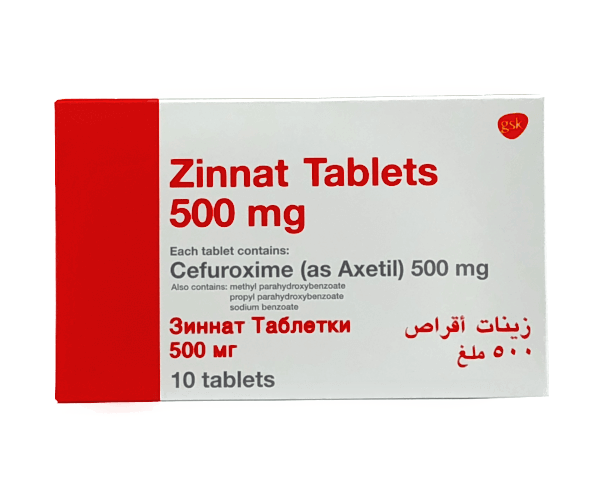Ceftin / Zinnat (
generic name: cefuroxime) is a cephalosporin antibiotic used to treat many bacterial infections. It works by interfering with the formation of the bacteria’s cell wall, causing it to rupture and eventually die. This action makes Ceftin effective against various bacterial infections, including respiratory tract infections, skin infections, ear infections, and urinary tract infections.
Ceftin is also used to treat Lyme disease, a tick-borne illness, particularly in its early stages. The medication belongs to the second generation of cephalosporin antibiotics and is often prescribed when other first-line antibiotics are not effective or when a patient is allergic to penicillin.
For more detailed information on antibiotics and their use, visit this excellent
consumer website.
Dosage
The typical dose of Ceftin varies depending on the infection being treated. For most infections, the dose is 250 mg to 500 mg twice daily for 7 to 10 days. The prescribing healthcare provider will determine the exact dose based on the type and severity of the infection.
Storage
Store Ceftin tablets at room temperature, between 20°C to 25°C (68°F to 77°F). Keep the medication away from moisture and light, and out of reach of children. Re
ad our tips on handling medicine safely.
FAQ
Can Ceftin be taken with food?
Yes, Ceftin should be taken with food to improve absorption and reduce stomach upset.
How long does it take for Ceftin to work?
Ceftin may start to work within a few days of starting the treatment, but it is important to complete the full course of therapy to ensure the infection is fully treated.
What should be done if a dose is missed?
If a dose is missed, take it as soon as remembered. If it is close to the time for the next dose, skip the missed dose. Do not double the dose to catch up.
This text is for informational purposes only. Please consult a doctor or pharmacist before using any medication.
Read the information leaflet that comes with the medication.
Ceftin may cause severe allergic reactions, particularly in patients allergic to penicillins. Symptoms include rash, itching/swelling, severe dizziness, and trouble breathing. Seek emergency medical attention if these occur.
Most people who use Zinnat do not experience any adverse side effects. Doctors prescribe this medication because they assess the benefits of such treatment outweigh any likely unwanted effects.
Some of the side effects that have been reported include:
- Diarrhea
- Nausea
- Vomiting
- Rash
- Headache
Not all side effects are listed here. If these or other unlisted symptoms persist or worsen, consult a healthcare provider or pharmacist.
Ceftin is FDA-approved for the treatment of:
- Respiratory tract infections like pneumonia and bronchitis affect the parts of the body involved in breathing, such as the lungs and airways. Symptoms can include coughing, mucus production, chest pain, fever, and difficulty breathing.
- Skin and soft tissue infections occur when bacteria enter the skin through a cut, scratch, or insect bite. They lead to redness, swelling, warmth, and pain in the affected area. More severe cases can result in abscesses or systemic infection.
- Otitis media is an infection of the middle ear that often follows a cold or respiratory infection. Symptoms include ear pain, difficulty hearing, fluid drainage from the ear, and fever. It is fairly common in children.
- Urinary tract infections (UTIs) are infections of any part of the urinary system, including the kidneys, bladder, or urethra. Symptoms include a strong urge to urinate, a burning sensation during urination, cloudy urine, and pelvic pain.
- Early Lyme Disease is a tick-borne illness that can cause flu-like symptoms, rash, fever, headache, and fatigue. If left untreated, it can lead to more severe complications such as joint pain and neurological issues.
Ceftin may be prescribed off-label to treat sinus infections characterized by inflammation and infection of the sinus cavities. Symptoms include nasal congestion, facial pain, headache, fever, and thick nasal discharge.













